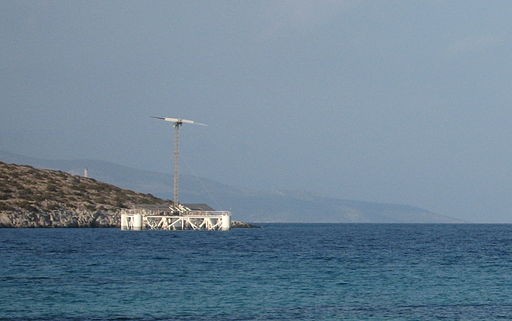According to the U.S. Energy Information Administration (EIA), the amount of energy generated by waves that reach the U.S. coast would be enough to cover 64% of the energy consumption in the country. Due to the potential of wave power, experts explore the possibility of creating desalination plants based on ocean energy.

Demand for Water Desalination
Almost half of the world's population live under highly water-stressed conditions for at least one month of the year, according to the World Resources Institute. As the world population grows and as climate change continues to put pressure on freshwater supplies, demands for desalinated water are likely to increase further.
The International Desalination Association reports that over 300 million people around the globe rely on desalination. Desalinated water is provided by more than 21,000 plants, almost twice as many as there were a decade ago. The desalination sector is expected to grow by 9% each year until 2030.
Two techniques are currently used to desalinate water- thermal and membrane. In thermal desalination, seawater is heated until it evaporates, leaving the salt behind. This process is typically very intensive. Meanwhile, the membrane-based system known as reverse osmosis works by pushing saltwater through a semipermeable membrane to catch the salt. Although this method requires a significant amount of energy, it is less so than thermal.
In both techniques, the supply of energy does not come from renewable sources, so fossil fuel is used, which contributes to carbon dioxide emissions.
READ ALSO: Cheaper and More Efficient Water Desalination Process
Breakthrough in Water Purification
A Canadian start-up called Oneka Technologies developed floating desalination systems that turn seawater into fresh water. While large, shore-based desalination plants usually require huge amounts of energy to remove the salt from seawater, the company aims to move away from conventional desalination facilities powered by fossil fuels.
As buoys anchored to the seabed, Oneka's floating desalination machines use a membrane system that harnesses wave energy. As energy is absorbed from passing waves, they are converted into mechanical pumping forces that draw in seawater and push around a quarter through the desalination system. The fresh, drinking water is then pumped to land through pipelines, using power from the waves.
According to Oneka's chief innovation officer, Susan Hunt, the company's system is modular, which means that multiple buoys can be anchored beside each other, making it marine-life friendly. Although the ocean is an unforgiving place, their technology is designed to operate there, going up and down in the waves all day and all night.
This technology does not use electricity since it is 100% mechanically driven. The units only need three-foot (one-meter) high waves to work. They come in three sizes, the largest measuring 26 feet (8 meters) long and 16 feet (5 meters) wide, and can produce up to 13,000 US gallons (49,000 liters) of drinking water per day.
Meanwhile, the brine produced is mixed back in with three-quarters of seawater pulled in by the buoy but has not gone through the membrane. This mixture is then released back into the sea. As described by Hunt, it is only about 25% saltier than the original seawater, making the brine in much lower concentrations than traditional desalination methods.
RELATED ARTICLE: Japan Develops Fluorine-Based Nanomembrane for Quick, Efficient Water Desalination
Check out more news and information on Water Desalination in Science Times.














